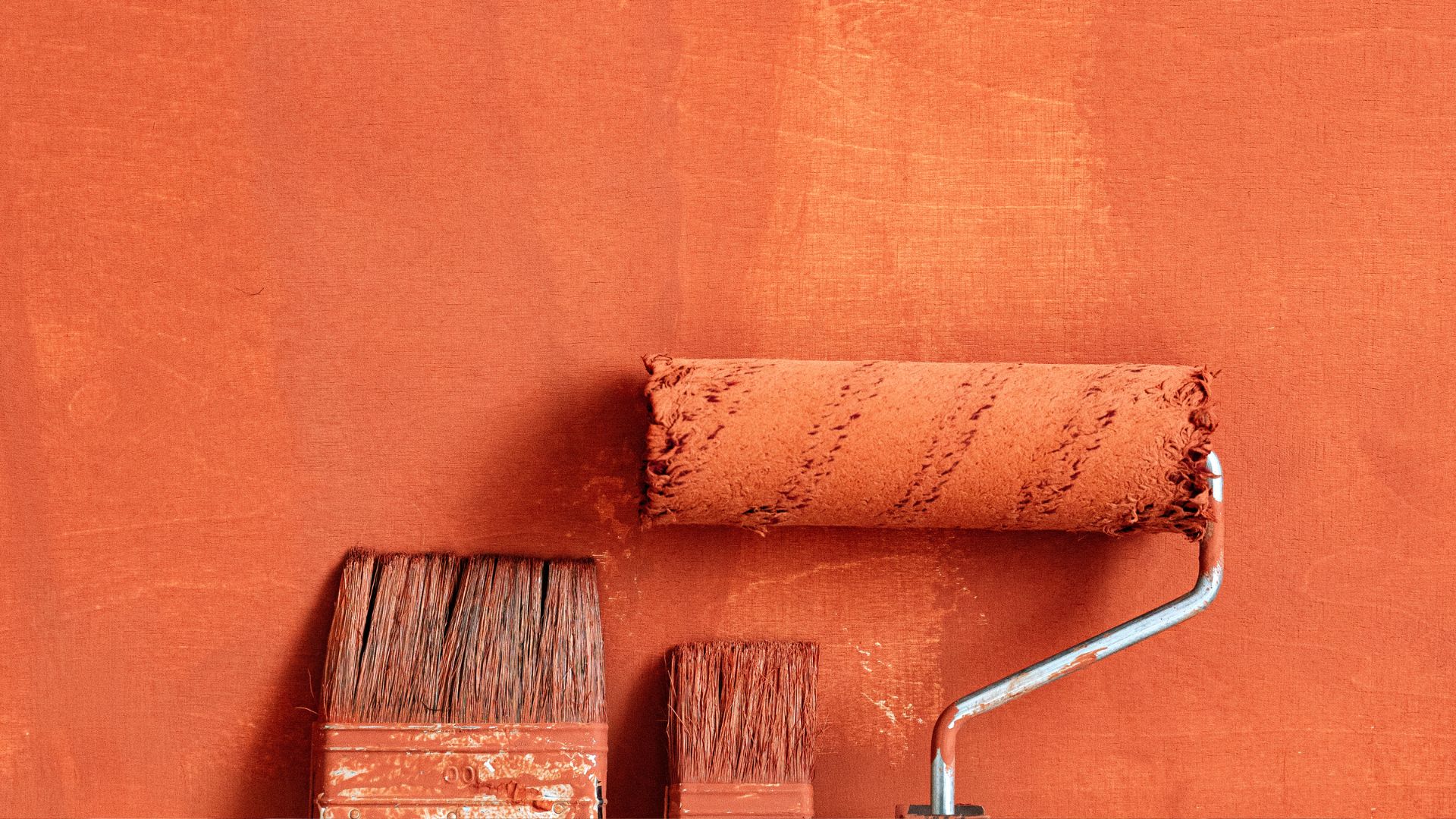Why Apply a Base Coat?
1. Surface Preparation: Before diving into the mural, it’s crucial to prepare the surface properly. A base coat acts as a primer, creating a uniform and smooth canvas for your artwork. It covers imperfections, evens out the surface texture, and helps the paint adhere better.
2. Enhances Color Intensity: A base coat serves as a foundation for your colors, making them appear more vivid and true to their actual shades. It prevents the underlying wall color from affecting the final outcome of your mural.
3. Improves Durability: By providing a stable foundation, a base coat helps in preventing peeling, cracking, or fading of the mural over time. It enhances the durability of your artwork, ensuring its long-lasting beauty.
Steps to Apply a Base Coat:
Surface Preparation: Clean the wall thoroughly to remove dust, dirt, and any previous coatings. Fill in any cracks or holes with putty and sand the surface for a smooth finish.
Priming the Wall: Use a high-quality primer that suits the surface material (such as acrylic-based primer for concrete or drywall primer for plastered walls). Apply an even layer of primer using a roller or brush and allow it to dry completely as per the manufacturer’s instructions.
Choosing the Right Base Color: Select a base coat color that complements your mural design. Typically, a neutral or light-colored base works well as it allows the colors of your mural to stand out vibrantly.

Applying the Base Coat: Once the primer has dried, apply the chosen base coat color evenly over the primed surface. Use a roller or brush and ensure consistent coverage. For better results, apply two coats, allowing each coat to dry thoroughly before proceeding.
Final Inspection: After the base coat is completely dry, inspect the wall for any imperfections or uneven areas. Touch up any spots as needed before starting your mural.
External Resources for Further Guidance:
- Choosing the Right Primer for Painting
- Tips for Surface Preparation Before Painting
- Understanding the Importance of Base Coats in Painting
Applying a base coat before starting your mural is a critical step that contributes significantly to the overall quality, vibrancy, and durability of your artwork. Don’t rush this process; invest time and effort into properly priming and applying the base coat to set the stage for a stunning mural that will captivate audiences for years to come.
Let’s delve further into the intricacies of preparing and applying a base coat for your mural.
Choosing the Right Materials
1. Primer: Invest in a high-quality primer suitable for the surface you’re painting on. Consider factors like surface texture, material (concrete, drywall, plaster), and any specific requirements for adhesion.
2. Base Coat Paint: Opt for paint specifically formulated for the base coat. Acrylic-based paints are often preferred for their durability and compatibility with various surfaces.
3. Brushes and Rollers: Use high-quality brushes or rollers that suit the texture of your wall. This ensures even application and better coverage.
Tips for Application
- Temperature and Humidity: Ensure the conditions are optimal for painting. Avoid extreme temperatures or high humidity as they can affect the drying process and the quality of the base coat.
- Thin Layers: Apply thin, even layers of the base coat. Multiple thin coats are better than a single thick coat, as they dry more evenly and reduce the risk of drips or uneven patches.
- Drying Time: Allow each coat to dry thoroughly before applying the next layer. Rushing this step can compromise the integrity of the base coat and affect the final outcome of your mural.
- Consistency: Maintain a consistent technique throughout the application process to achieve a uniform appearance. Take breaks if needed to ensure you’re applying the base coat evenly.
Troubleshooting Common Issues
1. Patchiness: If you notice patchy areas after the base coat dries, lightly sand the surface and apply an additional thin coat to even out the color.
2. Drips or Runs: To avoid drips or runs, ensure the paint is not overloaded on the brush or roller. Wipe off excess paint before applying it to the wall.
3. Uneven Texture: If the base coat results in an uneven texture, sand the surface lightly between coats to smoothen it out.
Final Thoughts
Applying a base coat is a foundational step in the mural painting process that shouldn’t be overlooked. It’s the canvas on which your creativity will flourish, and a well-applied base coat sets the stage for a visually stunning and enduring masterpiece.
patience and attention to detail during this phase will pay off in the long run, ensuring your mural stands out with its vibrant colors and lasting beauty.
Comparison tabular
| Aspect | Applying a Base Coat | Skipping Base Coat |
|---|---|---|
| Surface Preparation | Thoroughly prepares the surface by cleaning, priming, and smoothening imperfections. | May result in uneven adhesion and surface texture due to lack of preparation. |
| Color Intensity | Enhances color vibrancy and true-to-tone representation by providing a neutral canvas. | Colors may appear altered or dull due to the underlying wall color affecting the final outcome. |
| Durability | Improves the mural’s durability, preventing peeling, cracking, or fading over time. | Increases the risk of paint degradation, leading to potential damage and shorter lifespan of the artwork. |
| Visual Appeal | Provides a uniform base that allows the mural’s colors to stand out vibrantly. | May result in an inconsistent or patchy appearance, affecting the overall visual impact. |
| Longevity | Helps in maintaining the mural’s quality and vibrancy for an extended period. | Can lead to premature deterioration and the need for frequent touch-ups or repainting. |
Remember, the decision to apply a base coat is pivotal in ensuring the quality, longevity, and visual appeal of your mural. Taking the time to properly prepare the surface and apply a base coat sets the stage for a stunning masterpiece that will endure the test of time.
Wrapping up
A base coat isn’t just a preparatory step; it’s the bedrock of your masterpiece.
By investing time and care into properly priming and applying the base coat, you’re setting the stage for a vibrant, long-lasting artwork that captivates and inspires. Don’t rush through this foundational stage; instead, embrace it as an essential part of your creative journey.
Remember, a well-applied base coat:
- Enhances Color Brilliance: It allows your chosen colors to shine brilliantly without interference from the underlying wall color.
- Ensures Durability: It provides a stable foundation, safeguarding your mural against wear and tear for years to come.
- Creates Visual Impact: It sets the stage for a visually striking mural that grabs attention and leaves a lasting impression.
So, whether you’re painting a mural indoors or outdoors, on concrete or plaster, never underestimate the power of a meticulously applied base coat.
Feel confident and inspired as you embark on your mural painting adventure. And should you ever need guidance or have further questions, remember that the foundation of great art often starts with asking the right questions.
Happy painting

For over a decade, I’ve been Mike, an artist, crafter, and designer deeply immersed in the Croc world. I thrive on crafting unique, size-inclusive patterns, fostering creativity, and sharing them on ktforum.com. My designs aim to ignite your creative spark and delight you, ensuring clarity and ease of use through rigorous testing. Join me in expressing your creative flair and showcasing your craft with joy.
Related Posts
- Preserving Your Mural: The Importance of Applying a Protective Clear Coat
Adding a protective clear coat is a prudent step in preserving and safeguarding the longevity…
- Sketching a Mural Design on a Wall: A Step-by-Step Guide
Mural painting is a mesmerizing way to bring life and art into any space, but…
- Estimating Paint Quantity for Your Mural: A Step-by-Step Guide
Planning to dive into mural painting? Calculating the right amount of paint is crucial for…
- Should You Thin Wall Paint Before Applying it to a Canvas?
When it comes to painting on canvas, using wall paint might seem like an accessible…

